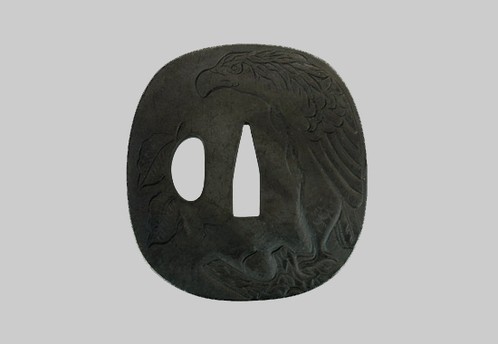

More informations about this product
Tsuba Naga Maru Gata (oval) shape, with a design of an eagle on a branch on the Omote face, and a motif of pine branches on the Ura face.
Kaku gata (square with rounded corners), Kaku/maru mimi gata (rounded square edge), with a Kozuka Ana.
This Tsuba depicts a large eagle (Washi - 鷲) on a pine branch (Matsu - 松).
In Japanese mythology, there is an eagle god known as "Amenohiwashi-no-kami". He appears in the Nihon Shoki and Kogo Shui, a historical account of the Inbe clan of Shinto practitioners, composed in 807 AD. He is said to have watched over the goddess Amaterasu when she was hiding (and imprisoned) in the cave of heaven. He is a sacred bird and the link between gods and humans.
The eagle has been declared a sign of auspiciousness, and is, with its keen eyesight, sharp talons, and intelligence, a symbol of the great power of nature.
The eagle also represents protection and power, often associated with the noble caste, bushi, and samurai.
The pine tree is considered a symbol of longevity and perseverance, even immortality, because it bears green leaves all year round. It has established itself in Japanese life as a model of good fortune. This is one of the reasons why it is used in the construction of Shinto temples.
In Shinto again, the Kami (deities) descend from the sky through pine branches to intervene in the world of mortals. The pine tree is the link between men and the gods.
Share your opinion
error Your review appreciation cannot be sent
feedback Report comment
check_circle Report sent
error Your report cannot be sent